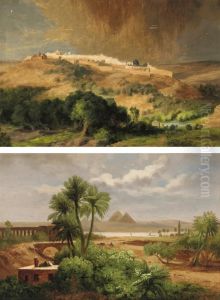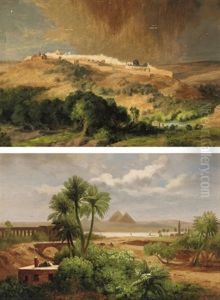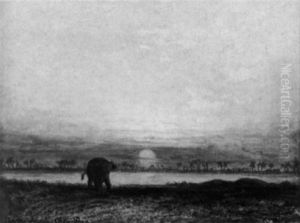Eduard Hartung Paintings
Eduard Hartung was a German artist known for his contributions to abstract art and graphic design throughout the 20th century. Born in 1904, Hartung's early life was marked by the turbulent socio-political landscape of Germany, which significantly influenced his artistic development and thematic choices. His work is characterized by a rigorous exploration of form, color, and composition, reflecting the broader movements of abstraction and modernism that defined European art during his lifetime.
Hartung's art evolved through various phases, initially drawing on the expressionist and figurative traditions before moving towards a more abstract and geometric vocabulary. This transition mirrored the broader shifts in the art world, as artists sought to break away from representational forms to explore the intrinsic qualities of color, shape, and line. Hartung was deeply engaged with the intellectual and cultural currents of his time, including the Bauhaus movement and its emphasis on the integration of art, design, and craftsmanship. His works, ranging from paintings and prints to graphic designs, exhibit a keen sense of balance and harmony, often employing a limited color palette to achieve a striking visual impact.
Despite the challenges posed by the political upheavals of the 20th century, including the rise of Nazism and the outbreak of World War II, Hartung remained committed to his artistic vision. After the war, he continued to develop his abstract style, participating in numerous exhibitions and gaining recognition for his contributions to modern art. His graphic work, in particular, earned him accolades for its innovative use of typography and layout, influencing the direction of graphic design in the post-war era.
Eduard Hartung passed away in 1963, leaving behind a legacy that continues to inspire artists and designers. His work is celebrated for its clarity, precision, and ability to transcend the boundaries between different art forms. Through his exploration of abstraction, Hartung contributed to the ongoing dialogue about the nature of art and its role in society, making him a pivotal figure in the history of 20th-century art.


